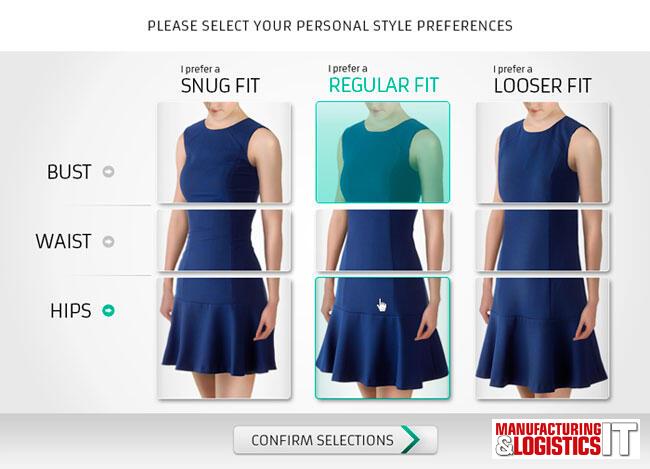Analysis of new and emerging sources of customer-centric 'big data' could help retailers increase sales by up to 25%, says virtual fitting room provider Fits.me – by enabling retailers to stock accurately for the "forgotten fifth" of shoppers whose measurements fall outside or towards the extremes of typical size sizing standards.
Retailers generally know what they actually sold, but have few ways to know what they had the potential to sell, offline as well as online. But, with way more than a million shoppers having entered measurements and fit preferences in the virtual fitting rooms of Fits.me's clients, a vast array of anonymous customer data has already been captured, while additional fresh data is collected every month. These data include the measurements and preferences of not just those shoppers that actually bought, but of those that left the store without buying.
Such data reveals what a retailer could have sold if they'd had the right stock, in the right sizes, in the right locations – a practice that Fits.me has termed 'intelligent stocking'.
Heikki Haldre, co-founder and chief executive for Fits.me, said: "If retailers use emerging big data sources to analyse the measurements not just of their actual but their potential customers, they can buy stock in better proportions than currently. This will enable them to engage shoppers that are currently forced to look elsewhere when shopping."
Yet there is significantly more sophistication than simply buying-in stock in better proportions. In December 2012, Fits.me revealed that average male waistlines in Birmingham are more than an inch bigger than in Brighton, raising the possibility of using detailed, regional analysis to determine the sizes to stock in bricks and mortar stores in different cities, and in what proportions.
"No-one is seriously predicting the end of clearance sales, but smart use of big customer data could see an end to rows of a particular garment, all in the same size, all at clearance prices, all because the buyer got the proportions wrong or sent them to the wrong part of the country," Haldre said.
A casual analysis of menswear data reveals that the best growth opportunity for retailers exists with larger sizes: only the smallest 5% of men are part of the 26% that are not catered for by normal 'S', 'M' and 'L' sizes in the UK, France, Germany and the United States. However, 21% of the largest men are not catered for when sizes stocked end at size 'Large'.
A similar analysis of womenswear shows that 7% of women qualify as a size 6 or smaller, while 13% are only catered for by a size 20 or larger, forming the "forgotten fifth" of women.
"There is quite a long way to go with big data solutions," cautions Haldre. "The analysis algorithms are complex and still being evolved. One of the reasons for that is that shoppers simply aren't guaranteed to buy the size that a size chart recommends – if only it were that simple. In fact, only about half do, while the rest buy one or even two sizes up, or one or even two sizes down - and that varies from garment to garment and garment-type to garment-type.
"But we're gathering the data and we will develop data tools that could transform garment retailing to an even greater extent than our fitting rooms," he said.
Fits.me's "forgotten fifth" is a conservative figure based on the 26% of men that are typically uncatered for, and the 21% of women similarly ignored by retailers, caused by retailers avoiding 'niche' sizes at either end of the scale. This typically manifests as low or zero availability of women's size 6 and below, or 20 and above.
However, Fits.me's estimate of a "forgotten fifth" is necessarily approximate –because the lack of sizing standards among retailers means that size 6 in one brand may be the same as a size 8 in another. To calculate the scale of the "forgotten fifth", Fits.me averaged the size charts of five major retailers (H&M, Tesco, Zara, M&S and Gap) and compared the results to body measurement data of over 38,000 women and over 118,000 men in the UK, the US, France and Germany that have entered their measurements into a Fits.me Virtual Fitting Room.
About the data for this announcement
Fits.me used data from over 38,000 female and over 118,000 male British, America, French and German shoppers, chosen at random from all data collected. Data were collected using Fits.me Virtual Fitting Room solutions, where consumers enter their measurements in order to virtually try on clothes for fit.
Size charts of Gap, Marks & Spencer (M&S), H&M, Tesco and Zara are all available to the public on the retailers' websites.

Add a Comment
No messages on this article yet